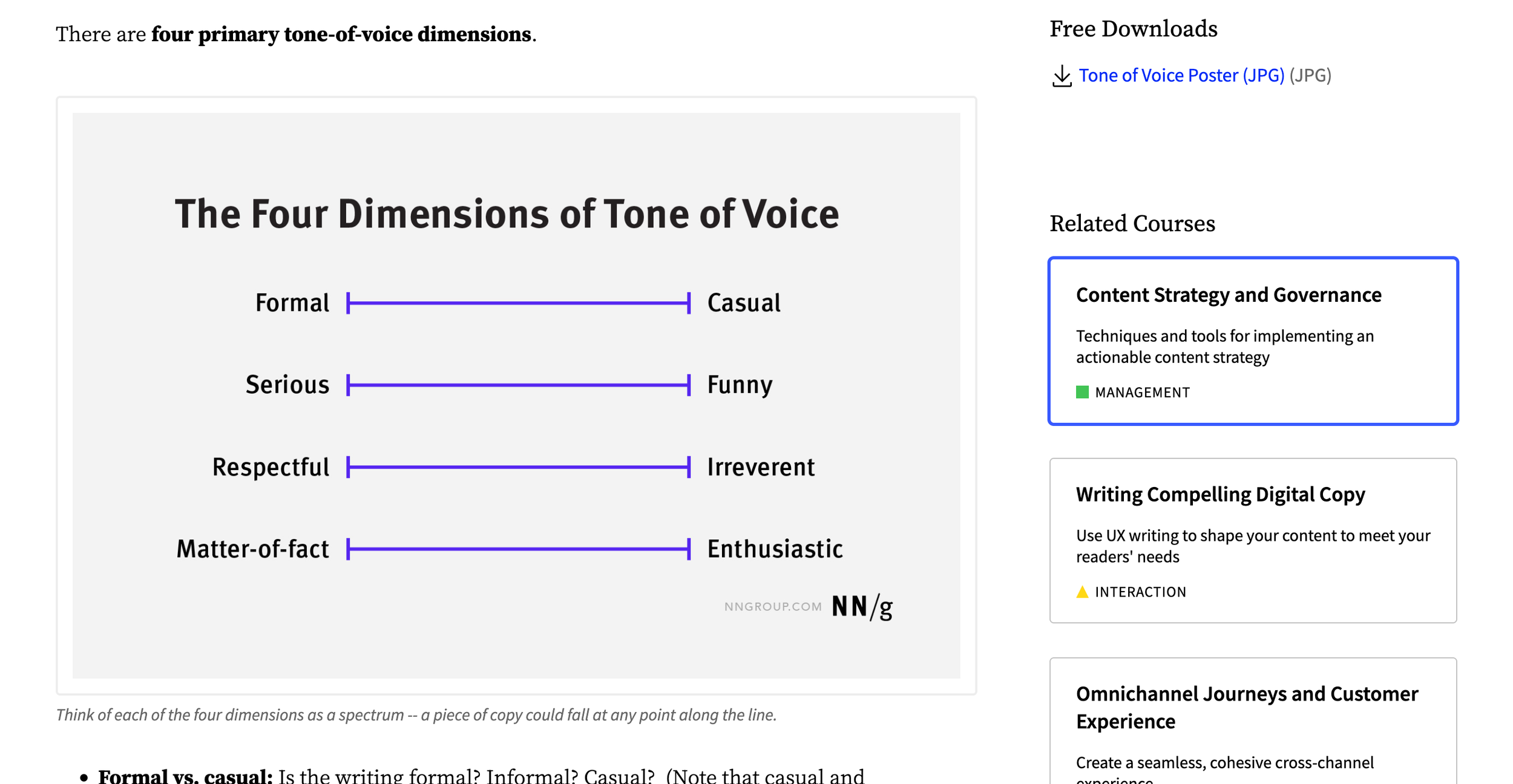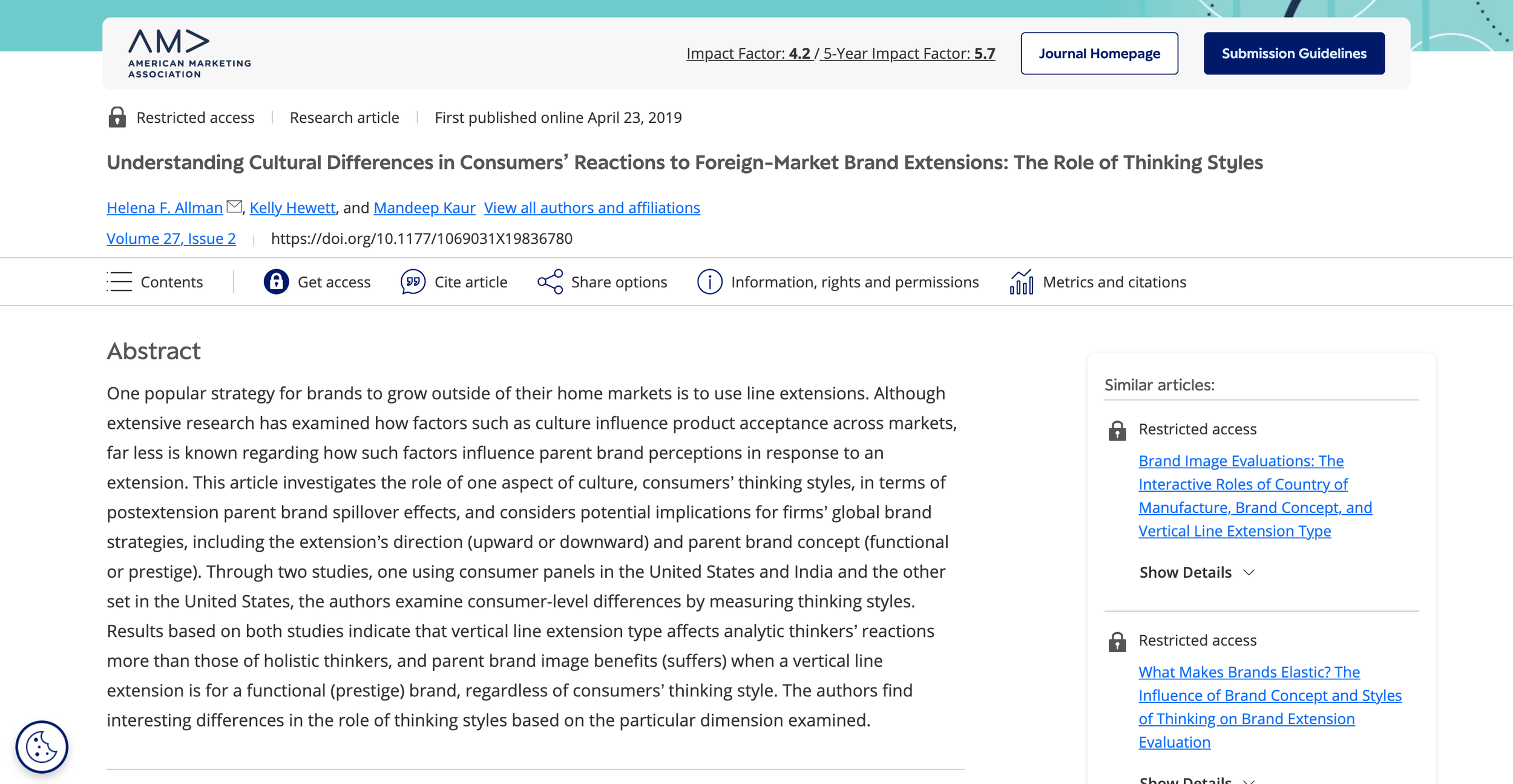The Ultimate Brand Voice Worksheet: 12 Exercises to Define Your Voice
73% of businesses think they have a distinct brand voice, yet research shows most customers can't tell one brand apart from another based on communication alone. It's like everyone's speaking the same beige corporate language, hoping someone will notice them in the crowd.
Meanwhile, the brands that do get it right? They're cleaning up. Research shows that for every 10% you boost your share of voice above your current market share, you'll typically gain 0.5% in actual sales. Companies with distinct communication styles see 33% higher revenue than those that sound like everyone else.
So why do most businesses still sound like they were written by the same committee? Because they're approaching brand voice all wrong. They gather in meeting rooms, brainstorm "personality traits," and emerge with adjectives like "friendly," "professional," and "innovative."
What if there was a better way? What if you could uncover the voice that's been hiding inside your business all along using proven brand voice worksheet exercises – not some manufactured personality, but the authentic communication style that makes your ideal customers think, "Finally, someone who gets it"?
This brand voice worksheet template will guide you through 12 research-backed exercises that go beyond surface-level personality traits to uncover your authentic brand voice.
Ready to stop sounding like everyone else?
Brand voice matters more than you think – here’s why
Before we get our hands dirty with the exercises in this brand voice worksheet, let's talk about what's happening in your customers' brains when they encounter your brand voice. Because understanding the science makes you better at the strategy.
Research from JWT and Mindshare revealed that emotional activity is twice as high when consumers voice a brand question rather than type it. But here's the fascinating bit: networks of brain areas become synchronized across participants who are listening to emotional episodes in spoken narratives.
What this means for your business is huge. When you get your brand voice right using a structured brand voice worksheet, you're creating neural synchronization between your brand and your audience. fMRI scans allow researchers to see which areas of the brain light up when a consumer is exposed to a brand message, and the results show that emotional branding creates measurable changes in brain activity.
Your brand voice does four crucial things that directly impact your bottom line:
Cuts through cognitive noise: 50% less brain activity occurs when processing an answer delivered by voice, which suggests that people find it easier to use
Creates authentic connections: companies with distinct email "voices" average 32% higher engagement rates than those using generic corporate communication styles
Builds measurable trust: A business with consistent branding tends to experience up to 20% greater overall growth and 33% higher revenue compared to one that struggles with off-brand content
Drives purchasing decisions: Humans are emotional beings, and our decisions are often guided more by feelings than by rational thinking
The anatomy of an effective brand voice worksheet
The brand voice worksheet I'm sharing with you today is different because it forces you to make real decisions. To choose sides. To commit to being something specific rather than trying to please everyone.
Most brand voice worksheet templates fail because they focus on generic personality traits without considering:
Competitive positioning
Psychological triggers
Neuroscience insights
Measurable business outcomes
In 2025, consumers tell us they are inclined to purchase food that aligns with their attitudes towards health, convenience and sustainability. The same principle applies to all purchasing decisions – people buy from brands that align with their values and communicate in ways that resonate emotionally.
How to use this brand voice worksheet
This brand voice worksheet contains 12 exercises designed to be completed sequentially. Each exercise builds on the previous one, creating a comprehensive picture of your authentic brand voice. Plan to spend 2-3 hours working through the complete brand voice worksheet template.
Exercise 1: The neurological dinner party test
If your brand rocked up to a dinner party, who would they be? But this time, we're thinking about the actual psychological impact using this brand voice worksheet exercise.
Delta might be the dependable, well-traveled guest who effortlessly helps the host take care of everyone. JetBlue makes everyone chuckle by sharing the latest memes on their smartphone.
Your turn: Write three paragraphs describing your brand at this dinner party. But here's the crucial addition – describe the emotional state people are in before and after interacting with your brand character.
Brand voice worksheet template exercise 1:
Before interaction emotional state:
Anxious/Calm
Skeptical/Trusting
Confused/Clear
Isolated/Connected
Brand character description: [3 paragraphs]
After interaction emotional state:
How do people feel?
What actions do they want to take?
What stories will they tell others?
Exercise 2: The "this but not that" framework with competitive intelligence
Ikea is minimalist but not boring. It's accessible without being generic. Patagonia is eco-conscious but not preachy.
But we're taking this further by adding competitive analysis in this brand voice worksheet. Pay attention to what seems to resonate with their audiences — what gets engagement or positive feedback — and where they might fall short.
Your enhanced "this but not that" framework:
We're [positive attribute] but not [negative version of that attribute] like [specific competitor]
We're [second positive attribute] but not [what that could become if taken too far] unlike [industry standard]
We're [third positive attribute] but not [common misconception about that trait] which [competitor] struggles with
➡️ This positions you against specific competitors rather than in a vacuum, giving your voice immediate differentiation value.
Exercise 3: The four dimensions with psychological triggers
The Nielsen Norman Group identified four primary voice dimensions, but we're enhancing this with psychological trigger mapping in this brand voice worksheet exercise.
For each dimension, map your voice against these psychological drivers:
Formal vs. Casual + Authority vs. Accessibility:
What level of authority do your customers need to feel confident?
Where can you be accessible without losing credibility?
We copy the actions of others to show we're part of the group – how does your formality level signal group membership?
Funny vs. Serious + Engagement vs. Trust:
Research from the American Psychological Association shows that we find a product more valuable, better tasting, and more desirable if we think it's harder to come by
How does humour impact perceived scarcity or exclusivity of your brand?
Respectful vs. Irreverent + Status vs. Rebellion:
What sacred cows in your industry could you challenge?
How can irreverence signal innovation without alienating core customers?
Enthusiastic vs. Matter-of-fact + Emotion vs. Logic:
System 1 thinking is intuitive, unconscious, effortless, fast and emotional. In contrast, decisions driven by System 2 are deliberate, conscious reasoning, slow and effortful
Which system are you targeting with your enthusiasm level?
Exercise 4: The celebrity spokesperson with brand archetype mapping
Even if you don't have the budget for a celebrity spokesperson, this brand voice worksheet exercise reveals unconscious brand associations.
Choose three celebrities, but this time, analyse why using brand archetypes:
The obvious choice: Someone who obviously fits your current brand archetype
The aspirational choice: Someone who represents where you want your brand to evolve
The absolute no: Someone who would contradict your core values
Just like people, brands have personalities. Some are perceived as fun, playful, and adventurous (e.g., Red Bull), while others are seen as professional, reliable, and traditional (e.g., IBM).
For each choice, identify:
Which brand archetype they represent (Hero, Sage, Innocent, etc.)
What unconscious associations they trigger
How their voice patterns could translate to written communication
Exercise 5: Competitive voice audit with share of voice analysis
Time for some strategic espionage. We're going beyond surface-level competitor analysis to understand how voice styles actually perform in your market using this brand voice worksheet.
Enhanced competitive analysis:
Voice positioning mapping: Plot competitors on voice dimensions
Engagement correlation: Which voice styles get the highest engagement?
Market gap identification: Where is there space for a differentiated voice?
Share of voice measurement: Share of voice tracks your brand's presence in conversations, while market share measures your portion of actual sales in the target niche
Document with business intelligence:
Common patterns across competitors and their market performance
Voice styles that correlate with higher engagement rates
Opportunities to differentiate based on actual market gaps
Potential ROI of voice differentiation strategies
Exercise 6: Customer language deep dive with social listening
Your customers have their own language, and 73% of consumers now use voice search at least weekly, with 41% incorporating it into their daily routines. This changes everything about how they express needs and desires.
Customer research mission:
Voice search analysis: How do customers speak about your industry in voice queries?
Emotional language mapping: While participants within a consumer neuroscience study might not spontaneously voice their thoughts when interacting with a new product or advertisement, analysing their verbal responses during think-alouds, interviews, and focus groups provides a new dimension to the understanding of their inner thoughts and feelings
Cultural context understanding: Research published in SAGE Journals confirms the influence of cultural differences in how consumers evaluate brand strength, especially when brands link with their self-concepts
What to track:
Emotional intensity patterns in customer language
Industry-specific terminology preferences
Communication style preferences by demographic
Voice search query patterns in your sector
Exercise 7: The brand personality matrix with ROI prediction
Now we're getting into the nitty-gritty with business impact forecasting using this brand voice worksheet template.
Using research-backed personality traits, create predictive models:
High-ROI personality traits based on research:
Authentic: Almost two-thirds of consumers say it's more important for marketing content to be authentic than polished
Consistent: 75% of customers expect a consistent experience on all channels
Emotionally intelligent: Many brands have lost sight of what truly connects with people — human emotion
Your enhanced matrix:
Highlight 4–6 words that describe your desired tone with ROI potential
Strikethrough up to 6 words that research shows perform poorly in your industry
Rank remaining words by predicted business impact
Create measurement framework for each chosen trait
Exercise 8: The content archaeology dig with performance correlation
This brand voice worksheet exercise reveals what actually works, not what you think works.
Performance-driven analysis:
Gather content that performed exceptionally well (high engagement, conversions, shares)
Analyse not just words, but psychological triggers
Email engagement metrics (opens, clicks, conversions) provide granular data about customer interest
Map performance to specific voice characteristics
What to measure:
Conversion correlation: Which voice elements drive action?
Engagement patterns: What creates lasting attention?
Viral potential: What makes content shareable?
Trust indicators: What builds credibility?
💡 Want to dive deeper into conversational copywriting techniques? My guide to copy that connects reveals exactly how to write in a way that builds genuine relationships with your audience.
Exercise 9: The emotional journey mapping with neuroscience insights
Ask participants to write down how customers feel before they encounter or approach the brand, but we're adding brain science to this brand voice worksheet.
Enhanced emotional mapping:
Pre-encounter state (System 1 brain):
What automatic, unconscious emotions are active?
What cognitive biases are in play?
What past experiences influence their mental state?
During interaction (Neural synchronisation):
How does your voice create brain pattern alignment?
What emotional peaks and valleys occur?
Which voice elements trigger mirror neuron activation?
Post-interaction (Memory consolidation):
What emotional memories are being formed?
How likely is positive recall and recommendation?
What triggers will activate brand memory in future?
Exercise 10: The anti-brand voice test with risk assessment
Sometimes it's easier to define what you're not, but we're adding strategic risk analysis to this brand voice worksheet exercise.
Create your anti-brand with business impact:
What voice would alienate your highest-value customers?
What tone would reduce conversion rates?
What style would damage long-term brand equity?
What approach would help competitors?
Risk assessment framework:
Revenue risk: What percentage of customers could you lose?
Acquisition risk: How would it impact new customer attraction?
Retention risk: What would happen to loyalty metrics?
Competitive risk: How would competitors capitalise?
💡 Need help measuring your current brand voice effectiveness? My Brand Voice Refresh Workshop guide shows you exactly how to audit your existing messaging and identify what's working (and what isn't).
Exercise 11: The real-world application test with A/B measurement
Right, enough theory. Time to put your emerging brand voice through rigorous testing.
Scientific testing protocol:
Control vs. Test: Create two versions of key communications
Measurement framework: Quantitative methods, such as web analytics, reveal less about user perception but show if copy has a measurable impact on the bottom line
Statistical significance: Make sure sample sizes support reliable conclusions
Performance metrics: Track conversion, engagement, and brand perception
Test scenarios:
Social media announcement: Measure engagement rate, share rate, comment sentiment
Email campaign: Track open rates, click-through rates, conversion rates
Website error message: Monitor bounce rate, customer service contacts, user satisfaction
Sales communication: Analyse response rate, meeting acceptance, deal progression
Exercise 12: The brand voice style guide with implementation framework
A brand style guide needs to be more than documentation – it needs to be a business system. This final section of your brand voice worksheet template creates actionable guidelines.
Your implementation-ready style guide:
Voice characteristics with measurement:
3-5 core personality traits with KPI alignment
Specific definitions with examples and counter-examples
Performance benchmarks for each trait
Tone variations with context mapping:
Customer service (empathy + efficiency)
Marketing (emotion + action)
Sales (trust + urgency)
Social media (engagement + authenticity)
Implementation protocols:
Training programmes: make sure that anyone who works on brand content has access and understands them, including writers, designers, agencies, engineers, support teams, and other content creators
Quality control: Review processes and approval workflows
Measurement systems: Monitor how your audience interacts with your brand across various platforms
Evolution framework: Regular review and refinement processes
💡 Want to see this in action? Check out my step-by-step framework for creating brand voice guides – complete with practical templates and real examples you can adapt for your business.
The bottom line
Brand voice worksheet exercises are useless if they don't translate into business results. Your voice should:
Make your ideal customers feel understood and excited to work with you
Differentiate you clearly from competitors using measurable criteria
Build trust through consistency across all touchpoints
Drive conversions by creating emotional connections backed by neuroscience
Ready to develop a brand voice that converts customers and drives business growth? I help businesses discover their authentic voice using proven brand voice worksheet methodologies and turn it into copy that connects and sells.
Get in touch with me and let's find the words that make your business impossible to ignore.
Frequently Asked Questions About Brand Voice Worksheets
What is a brand voice worksheet?
A brand voice worksheet is a structured document containing exercises and prompts designed to help businesses discover, define, and document their authentic brand voice. Unlike generic personality assessments, effective brand voice worksheet templates include competitive analysis, psychological triggers, and measurable business outcomes.
How long does it take to complete a brand voice worksheet?
Most comprehensive brand voice worksheet exercises take 2-3 hours to complete properly. However, the insights you gain from a well-designed brand voice worksheet will inform your communications strategy for years to come, making it one of the highest-ROI activities you can do for your brand.
Can I use a brand voice worksheet for multiple brands?
Yes, but each brand needs its own dedicated brand voice worksheet. The exercises in a brand voice worksheet template are designed to uncover the unique personality and positioning of each individual brand, so copying results between brands won't be effective.
What's the difference between a brand voice worksheet and a brand style guide?
A brand voice worksheet is the discovery tool you use to uncover your brand's authentic voice through exercises and analysis. A brand style guide is the implementation document you create after completing your brand voice worksheet – it contains the actual guidelines, examples, and rules for using your brand voice consistently.
How often should I revisit my brand voice worksheet?
Review your brand voice worksheet results annually or whenever you undergo significant business changes, launch new products, or target new markets. Your brand voice should evolve with your business while maintaining core consistency established through your original brand voice worksheet exercises.
Can I download a free brand voice worksheet template?
While many free brand voice worksheet templates exist online, they often lack the depth and strategic thinking needed for competitive differentiation. This comprehensive brand voice worksheet includes advanced exercises based on neuroscience research and competitive intelligence that go far beyond basic personality assessments.
Should teams complete the brand voice worksheet together or separately?
For best results, have team members complete the brand voice worksheet exercises individually first, then come together to discuss and align on the results. This approach prevents groupthink while ensuring everyone's perspective is captured in your brand voice worksheet.
How do I measure the success of my brand voice worksheet?
Track metrics like brand recognition, engagement rates, conversion improvements, and customer feedback consistency before and after implementing insights from your brand voice worksheet. The most successful brand voice worksheet templates include built-in measurement frameworks to track business impact.





